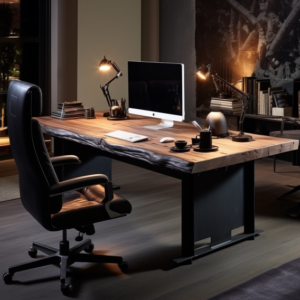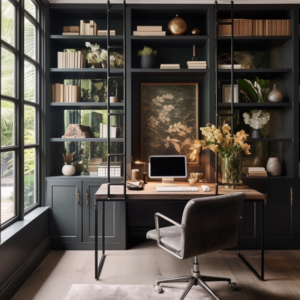Working from home has become increasingly popular, and having a well-designed home office can make a significant difference in your productivity and comfort. Whether you’re setting up a home office for the first time or looking to revamp your existing workspace, this guide will help you get started on the path to creating an efficient home office that suits your needs and style.
1. Choose the Right Location
Selecting the right location for your home office is the first step in creating an efficient workspace. Consider the following factors:
- Natural Light: Opt for a spot with ample natural light to reduce eye strain and boost your mood.
- Quiet Environment: Ensure that your chosen area is relatively quiet to minimize distractions during work hours.
- Accessibility: Your home office should be easily accessible from the main living areas but separate enough to maintain a work-life balance.
2. Invest in Quality Furniture
Your office chair and desk are crucial components of your workspace. Invest in ergonomic furniture that provides comfort and supports your posture during long work hours. A height-adjustable desk can be a game-changer, allowing you to switch between sitting and standing positions.
3. Organize Your Workspace
Effective organization is key to productivity. Consider the following organization ideas:
- Desk Organization: Use desk organizers, trays, and shelves to keep your workspace tidy.
- Cable Management: Keep cables and cords organized to prevent a cluttered look and potential tripping hazards.
- Storage Solutions: Invest in storage units or cabinets to keep files, supplies, and equipment neatly organized.
4. Ergonomics Matter
Maintaining proper ergonomics is essential for your health and productivity. Ensure that your chair, desk, and computer monitor are at the right height to prevent strain and discomfort. Consider using an ergonomic keyboard and mouse to reduce the risk of repetitive strain injuries.
5. Personalize Your Space
Make your home office a place where you enjoy spending time. Personalize your workspace with artwork, plants, and decor that reflects your style and inspires you. A well-designed office can boost creativity and motivation.
6. Lighting Solutions
Good lighting is crucial for productivity. If natural light is insufficient, invest in quality artificial lighting, including task lighting that illuminates your workspace effectively. Avoid harsh fluorescent lighting, as it can cause eye strain.
7. Technology and Connectivity
Ensure that your home office is equipped with reliable technology and a fast internet connection. Invest in a comfortable, noise-canceling headset if you need to attend virtual meetings or make conference calls.
8. Storage and Filing Systems
Adequate storage and filing systems are essential for keeping documents, paperwork, and office supplies organized. Consider digital solutions for reducing paper clutter and enhancing accessibility.
Creating an efficient home office takes time and thoughtful planning, but the benefits of a comfortable and productive workspace are well worth the effort. Stay tuned for more in-depth articles on each of these topics to help you transform your home office into a haven of productivity and creativity.



